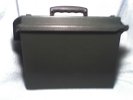Antennas have 3 main operating features of interest. Gain, directivity, and polarization. Size also matters but usually isn't the biggest factor. Stock antennas for the AP or Router have very low gain and are omnidirectional. Polarization is variable depending on what direction the shaft is pointing.
You can get double duty by adding gain in a forward direction while excluding signals to the side of or behind your antenna. This gets better still when you set the antenna up for horizontal polarization. Most existing WiFi signals are vertical. The industrial noise in the band is also more vertical than horizontal.
Directivity is measured lots of ways but one of the most common is the 3dB beamwidth. Another is front to back or front to side gain ratios. With a 12-15 dBi flat panel, you will knock off almost everything behind you and most of what is to the side. However, anything within 30-40 degrees or so of the aim point is in the hot spot. Going up to 24dBi of gain takes the beamwidth and shrinks it to only a few degrees. This is a superior way to
exclude other signals by not looking at them. The weak, distant signal you receive can still be used just fine if you make all of the others near the same frequency MUCH weaker.
Both stations need to use the same polarization or the signals really dip in strength.
Some possible antennas include:
This
site lists some interesting home brew antenna measurement test equipment. Unfortunately, some of the articles are in Dutch.



